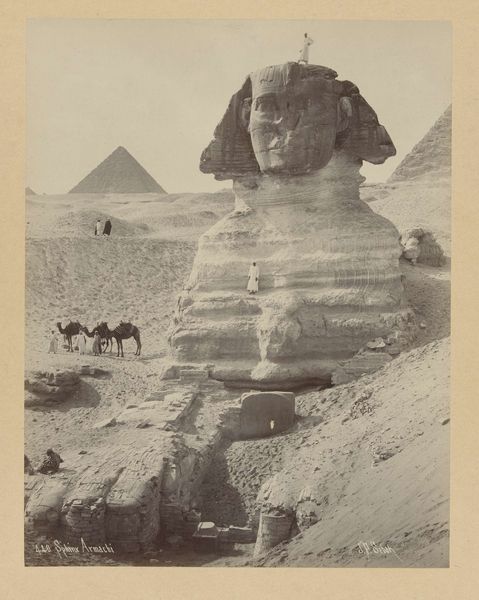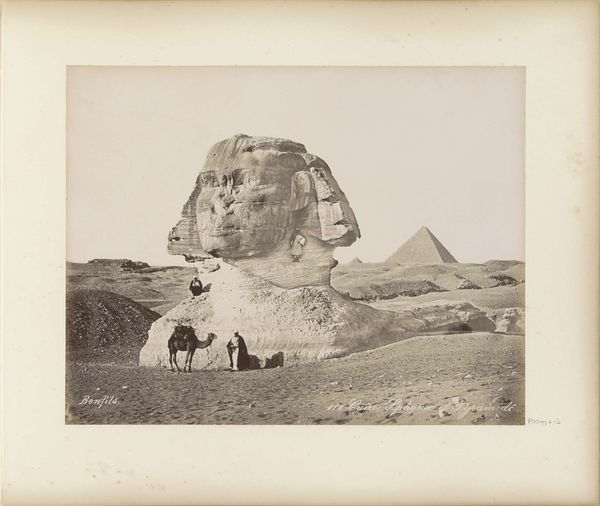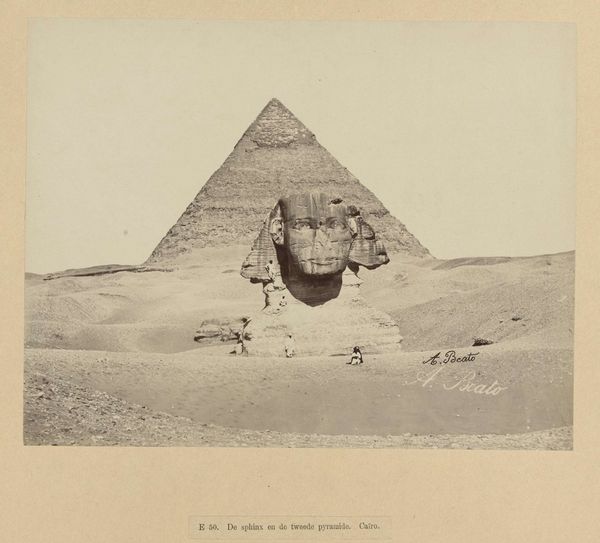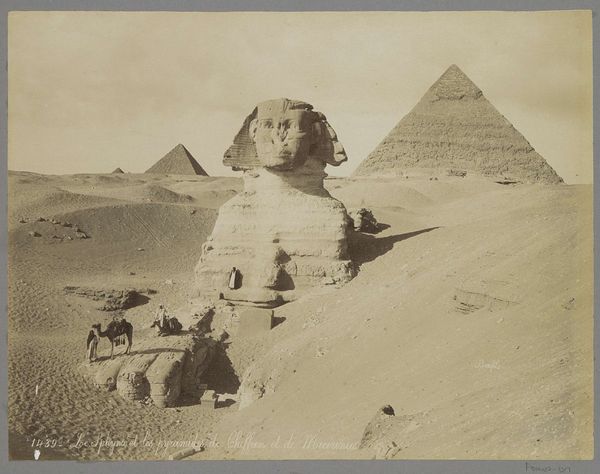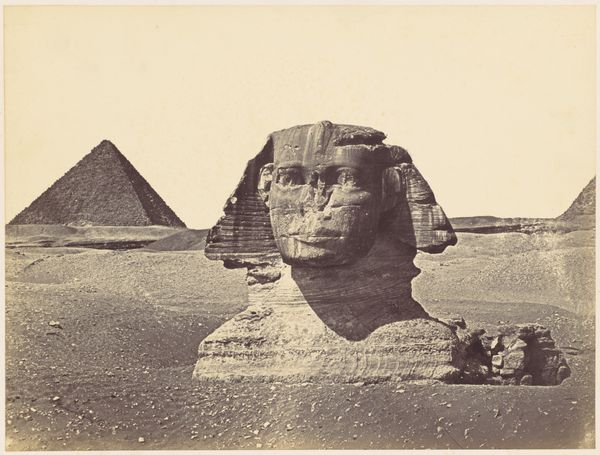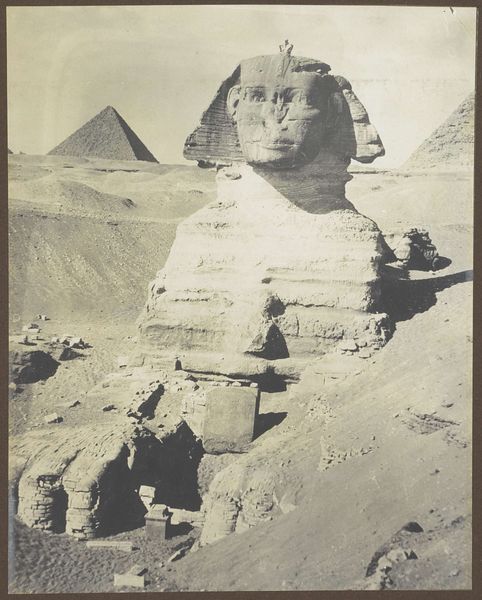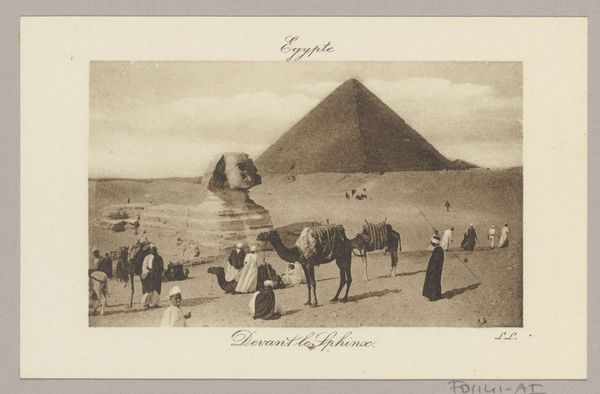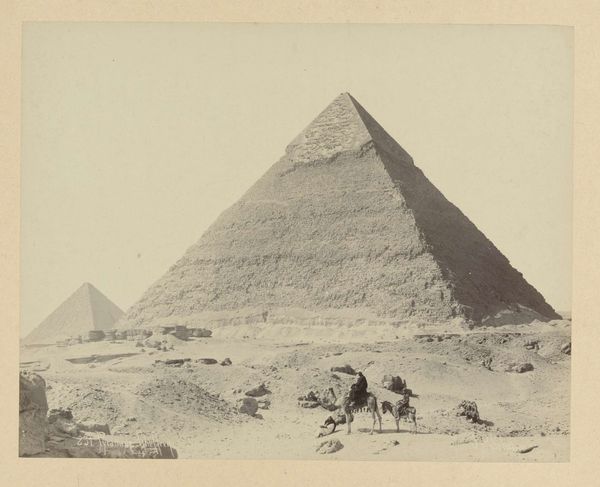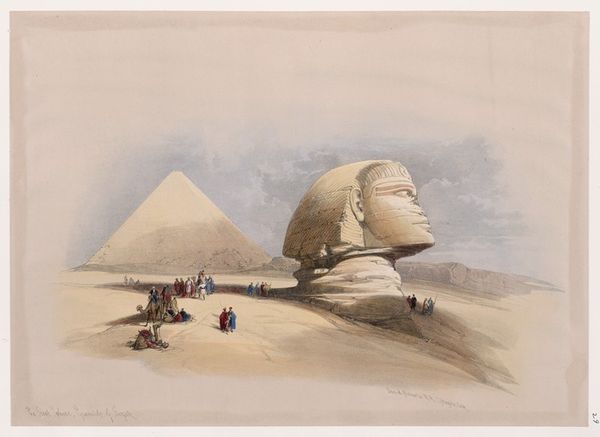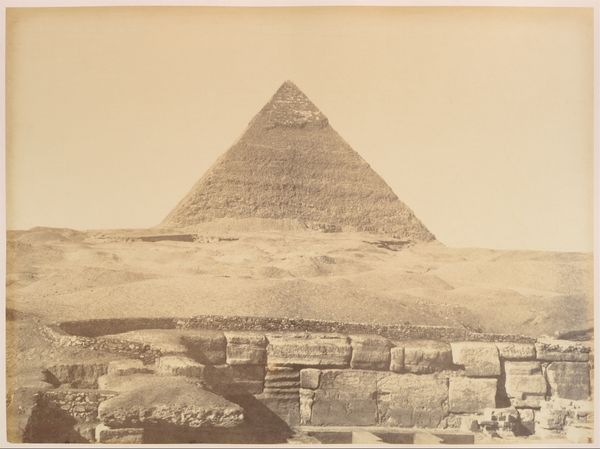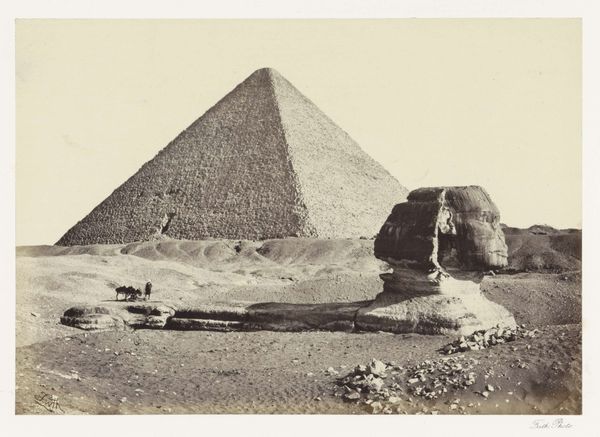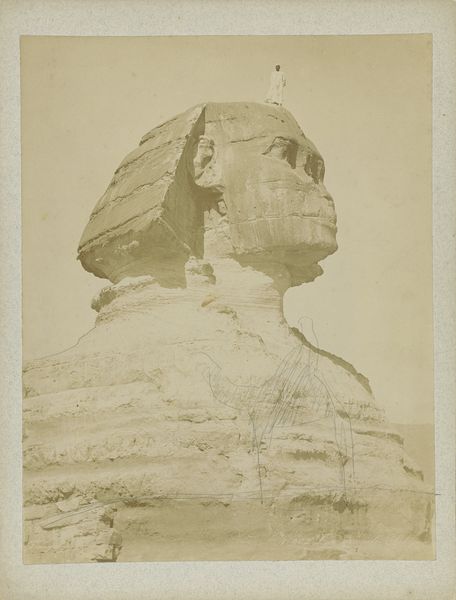
drawing, print, ink
#
drawing
# print
#
landscape
#
ancient-egyptian-art
#
figuration
#
ink
#
ancient-mediterranean
#
miniature
Dimensions: height 250 mm, width 350 mm
Copyright: Rijks Museum: Open Domain
Curator: Standing before us is “Head of a Sphinx and Pyramids in the Desert,” an ink and print drawing created around 1830. Editor: Right away, I get this powerful feeling of vastness and stillness. The scale is cleverly distorted; the sphinx head is massive, almost comically so, which sort of diminishes the pyramids behind it. There's a stark contrast created by the limited grayscale, emphasizing form and light. Curator: It’s the work of Leendert de Koningh, on display here at the Rijksmuseum. Koningh, a known landscape artist, clearly aimed to capture the monumental feel of ancient Egypt. You can see his technique focusing on line work, it defines the shapes of both the human-scale figures and the immense structures, from the grand pyramids in the background to the minutely detailed sphinx head looming in the foreground. Editor: Yes, the stark contrasts really heighten the dreamlike quality. I almost feel like I'm squinting through a hazy desert morning. The men on horseback seem dwarfed by the silent, imposing architecture. It’s like humanity reduced to a curious blip against the face of enduring, ancient mysteries. There is this very sharp definition and that's what makes the structure of the sphinx. You can sense an immense presence and gravity emanating from it. Curator: Absolutely, and there's an almost theatrical feel to it. The positioning, almost staged to portray an accurate landscape in its grandeur. Editor: It also raises some interesting questions about colonialism, doesn’t it? The romanticized gaze upon ancient lands and the inherent power dynamics present with European depictions. This perspective adds another layer to the composition and its historical placement. I mean what must he be thinking as an artist looking at that scene? Curator: A complex interpretation for sure, highlighting a deep and intricate look in art history. Ultimately, the work shows off not just an iconic landscape, but the artist's own way of taking this landscape as part of history. Editor: Precisely. In all, Koningh not only transports us to ancient Egypt, but also invites us to consider our contemporary vantage point of history and the meaning it embodies through its aesthetic grandeur and lasting, often conflicting interpretations.
Comments
No comments
Be the first to comment and join the conversation on the ultimate creative platform.
